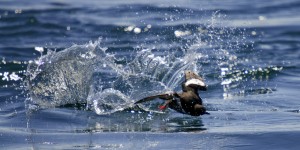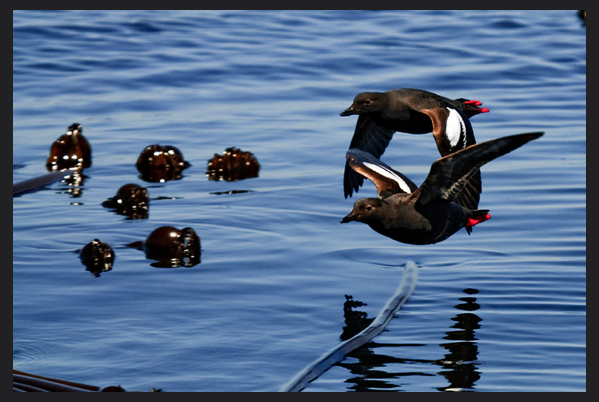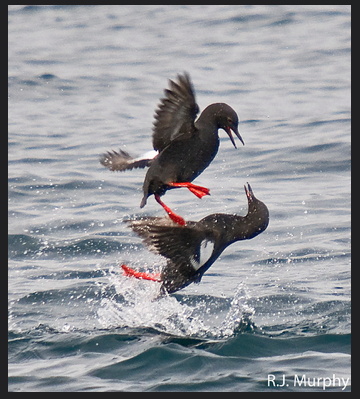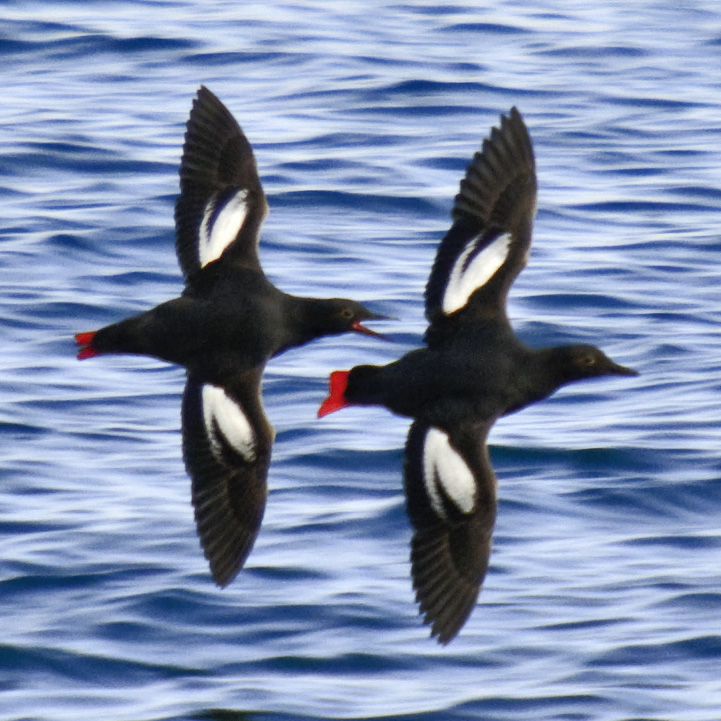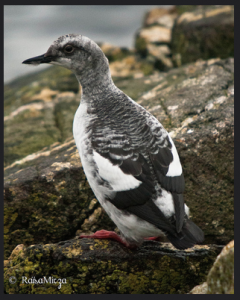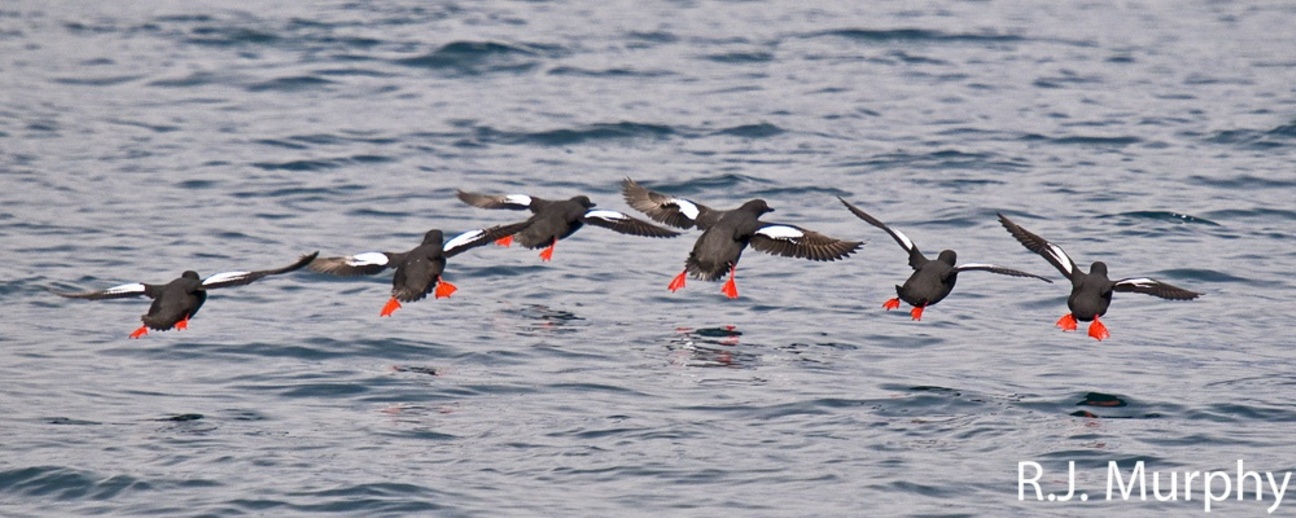
Pigeon Guillemots arrive in early January, some still in their mottled winter plumage. Their numbers build and nesting takes place in late spring. A favourite foraging area is in the main channel in font ( to the North) of the Race Rocks docks. They may number up to 100 in the water, diving down in the current and coming up with small fish, especially gunnels.
Ryan Murphy has done some amazing telephoto shots starting in February of 2009 of Pigeon Guillemots such as those below. They are included in a set here on his Flickr site.
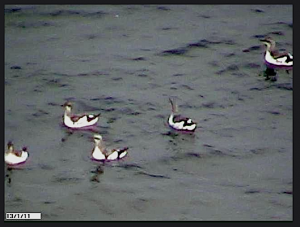 Winter Plumage on Pigeon Guillemots, photo by Pam Birley by the Remote control Camera 5 |
|
Description: The pigeon guillemot has an average size of 12-14”. Its summer plumage is black with large white wing patches interrupted by black stripes.
It is interesting to note that in winter, its head and upper parts lighten slightly, however in all seasons feet and bill lining are brilliant red. In the spring it can be heard making a high whistle.
How and what they eat: The Pigeon Guillemot feeds by diving and taking up small fish. Some examples are: Penpoint Gunnels or “Blenny”, sand lance, smelt, and sculpins.
Habitat: This species resides in rocky coastal areas, with shallow inshore waters as its feeding grounds. Nest cavities are found amongst holes and rock crevices on the West, North East and South sides of Great Race Rocks. Some habitat for nesting was created years ago when blasting for the helicopter pad produced rubble under which they could tunnel..
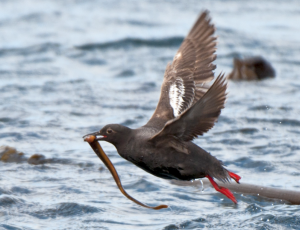 Ryan Murphy took this picture of a pigeon guillemot having just caught a gunnel. |
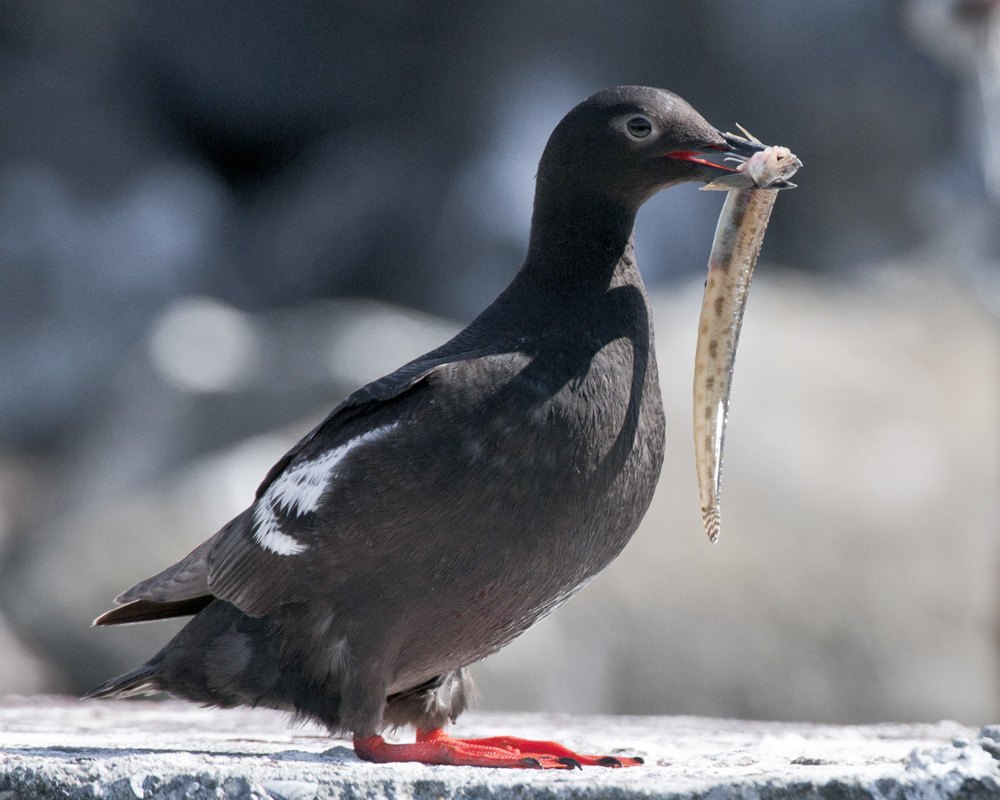 Lumpenus sagitta, pacific snake prickleback captured by Pigeon guillemot, Ryan Murphy photo. |
Predators: Seagulls are predators of pigeon guillemot eggs. At Race Rocks, the main threat is predation by Bald Eagles, Peregrine falcons and nest predation by River Otters.
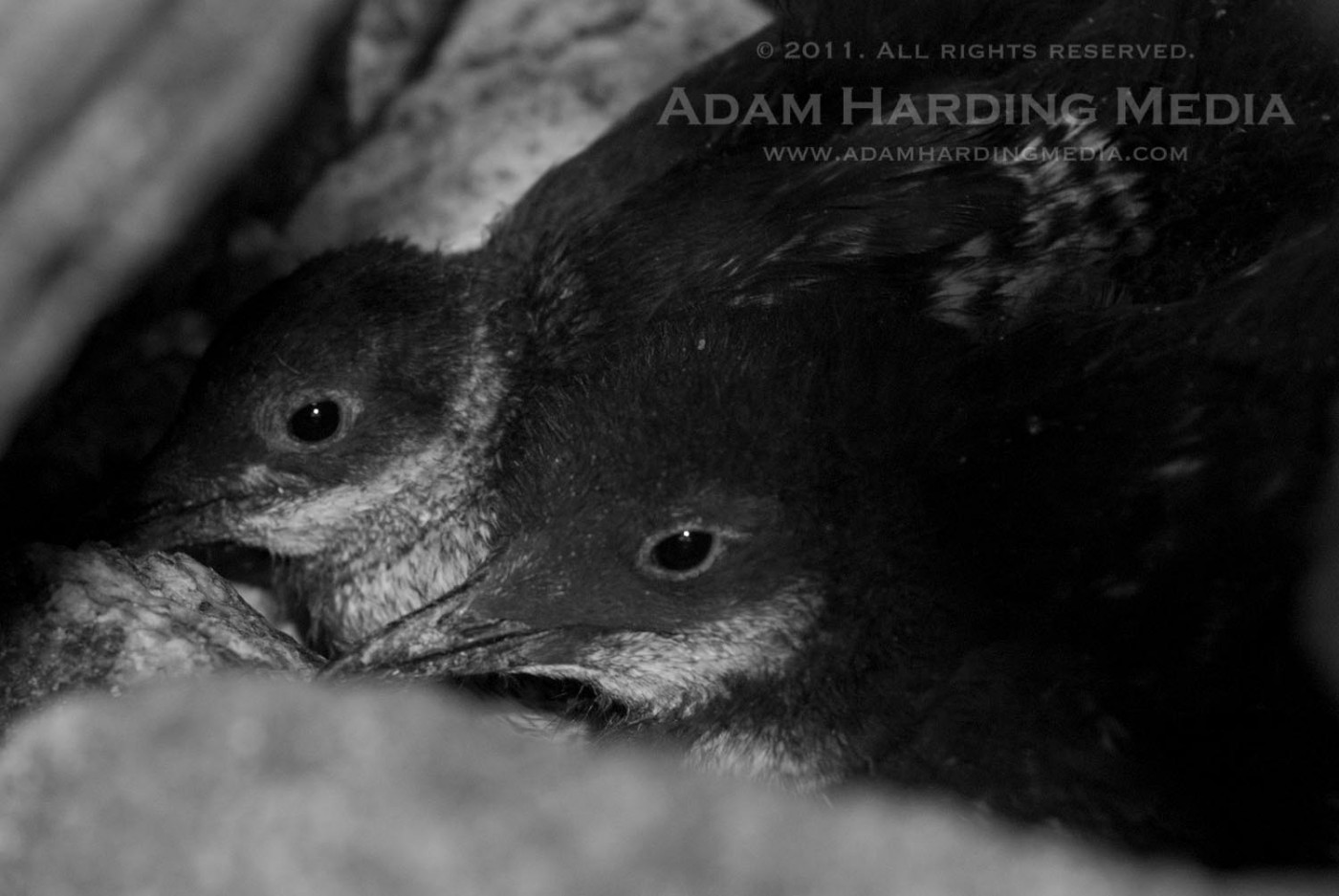
Summer ecoguardian Adam Harding was able to take pictures of a the chicks in a guillemot nest in the summer of 2011. The nest was located at the end of the low rock wall West of the science house
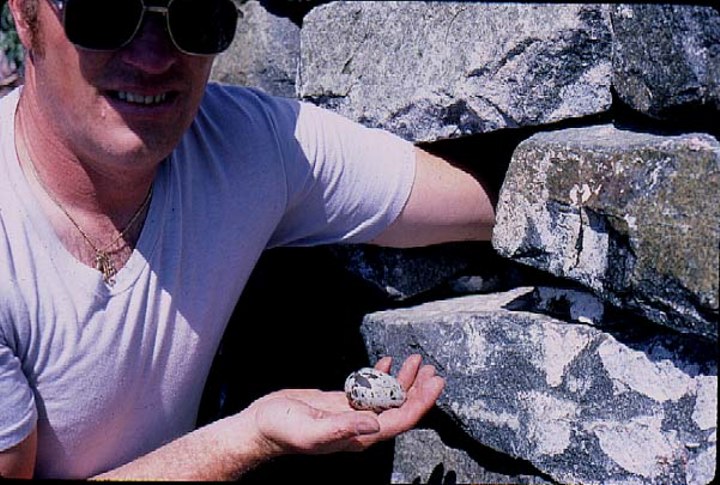 1 or 2 greenish or whitish, dark-spotted eggs are laid in a crevice or burrow. This nest burrow had been abandoned,perhaps due to predation, at the end of the season eggs were still present unhatched in the burrow. The light keeper’s assistant is shown here-1984- |
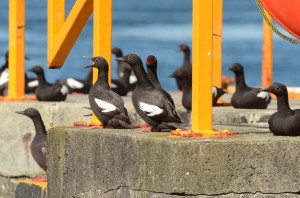 Pigeon Guillemots photo by Ecoguardian Courtney Edwards in March , 2014 |
The slide show above was made from pictures taken by Pam Birley in 2007
Kiprop made this video of the Guillemots jostling for position on the rocky shore on the West side of the island.
slide show of mating guillemots by Pam Birley was made from camera 5 screen captures.
Video of pigeon guillemots on the island and out in the passage where they dive and forage.[/caption]
Return to the Race Rocks Taxonomy and Image Gallery
Other Members of the Class Aves at Race Rocks.
Original text of this taxonomy was done in Dec. 2001 by Anthony Woodside, PC Year 27


